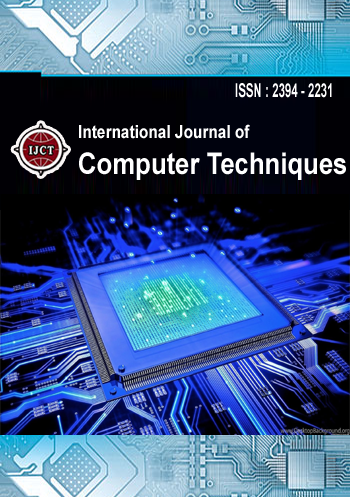
 Submit Your Article :
editorijctjournal@gmail.com
Submit Your Article :
editorijctjournal@gmail.com

Paper Title : Restoration of Quality in Engineering Colleges through Blended Mode of Teaching and Learning during Pandemic
ISSN : 2394-2231
Year of Publication : 2021
 10.29126/23942231/IJCT-v8i4p1
10.29126/23942231/IJCT-v8i4p1


MLA Style: H. M. Naveen " Restoration of Quality in Engineering Colleges through Blended Mode of Teaching and Learning during Pandemic " Volume 8 - Issue 4 July-August , 2021 International Journal of Computer Techniques (IJCT) ,ISSN:2394-2231 , www.ijctjournal.org
APA Style: H. M. Naveen " Restoration of Quality in Engineering Colleges through Blended Mode of Teaching and Learning during Pandemic " Volume 8 - Issue 4 July-August , 2021 International Journal of Computer Techniques (IJCT) ,ISSN:2394-2231 , www.ijctjournal.org
Abstract
The NEP, 2020 recognizes the challenge of providing technical education to millions of youth during the pandemic. Hence, it recommends for the use of blended modes of learning which is a mix of both online and direct mode. Even UGC proposes a blended mode of teaching and learning in HEIs. An attempt has been made in this article to present a theoretical background of blended mode with an emphasis on various structures and role of teachers and students. Further, the modalities of implementation considering some possible scenarios in BL as proposed by UGC are discussed. The paper has been concluded by describing various pedagogic approaches like online and F2F modes ; project based learning ; and integrating technology in online learning. A blended mode of learning is considered as a best approach, since it responds to all learning requirements and styles. Many international learning organizations have adopted this approach as a major tool and technique for imparting higher education, especially the technical courses like Engineering. Hope the present article gives some insights into classroom practices of blended mode
Reference
Al Fiky, A. I. (2011). Blended Learning : Educational Design, Multi-media, Creative Thinking. Amman (Jordan) : Dar Athaqafa Begum, Jahitha. A. (2011). ICT in Teaching and Learning. New Delhi: APH Publishing House. Chitra.P.S., & Singaravelu.G. (2016). Potency of Blended Learning in Learning Science. Global Journal for Research Analysis, 5(9), 48-50. Deivam, M. (2017). Blended Learning Perspectives. Germany: Scholar’s Press Academic Publishing. Eddie Gulc, (2006). Using Blended Learning to Accommodate Different Learning Styles. Higher Education Academy Graham, C, (2006), Blended Learning Systems, Definitions, Current Trends and Future Directions. The Handbook of Blended Learning : Global Perspectives, Local Designs. San Francisco: John Wiley and Sons. Karamizadeh, et al., (2012). The Study of Effectiveness of Blended Learning Approach for Medical Training Course. Iranian Red Crescent Medical Journal. 14(1), 41-44. Macdonald, J. (2008). Blended Learning and Online Tutoring. Hampshire, UK : Gower. Document Type: book. Murray, M. R. (2004). An Exploration of the Kinesthetic Learning Modality and Virtual Reality in a Web Environment (Doctoral Dissertation). Dissertation Abstracts International, 65(4), 1332. Picciano, A. G. (2006). Blended Learning Implication for Growth and Access, Journal of Asynchronous Learning Networks, 10 (3) Sreekala, E. (2009). Blended Learning as a Strategy of Innovation in Education. University News, 47 (49). Thorn, K. (2003). Blended Learning: How to Integrate Online and Traditional. London, Kogan Page. Wakefield, A.B., Carlisle, C., Hall, A.G., & Attree, M.J. (2008). The Expectations and Experiences of Blended Learning Approaches to Patient Safety Education. Nurse Education in Practice, 8(1), 54-61
Keywords
—Blended Learning, Theoretical Background, Modalities of Implementation, Pedagogic Approaches, Engineering Education, Pandemic
